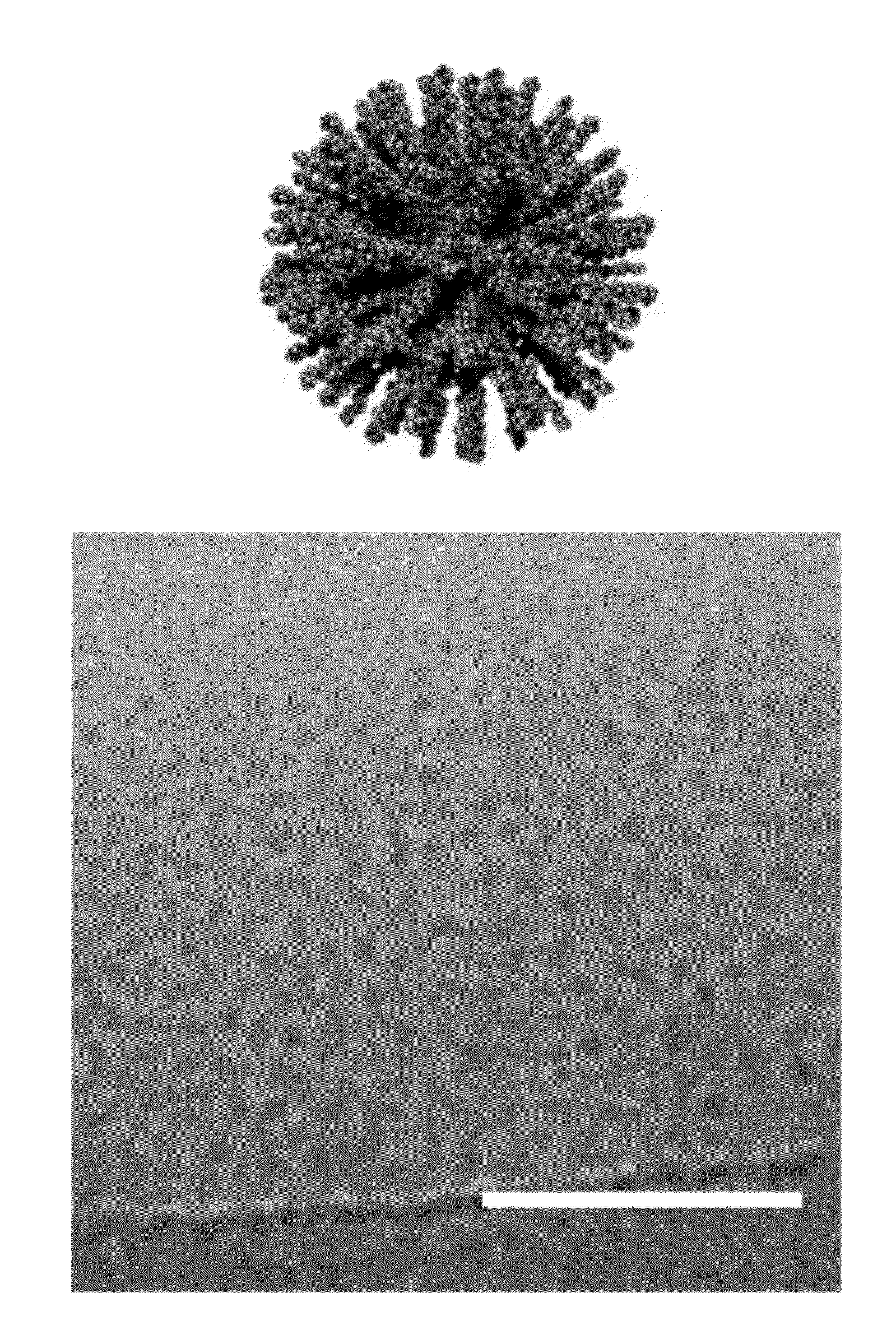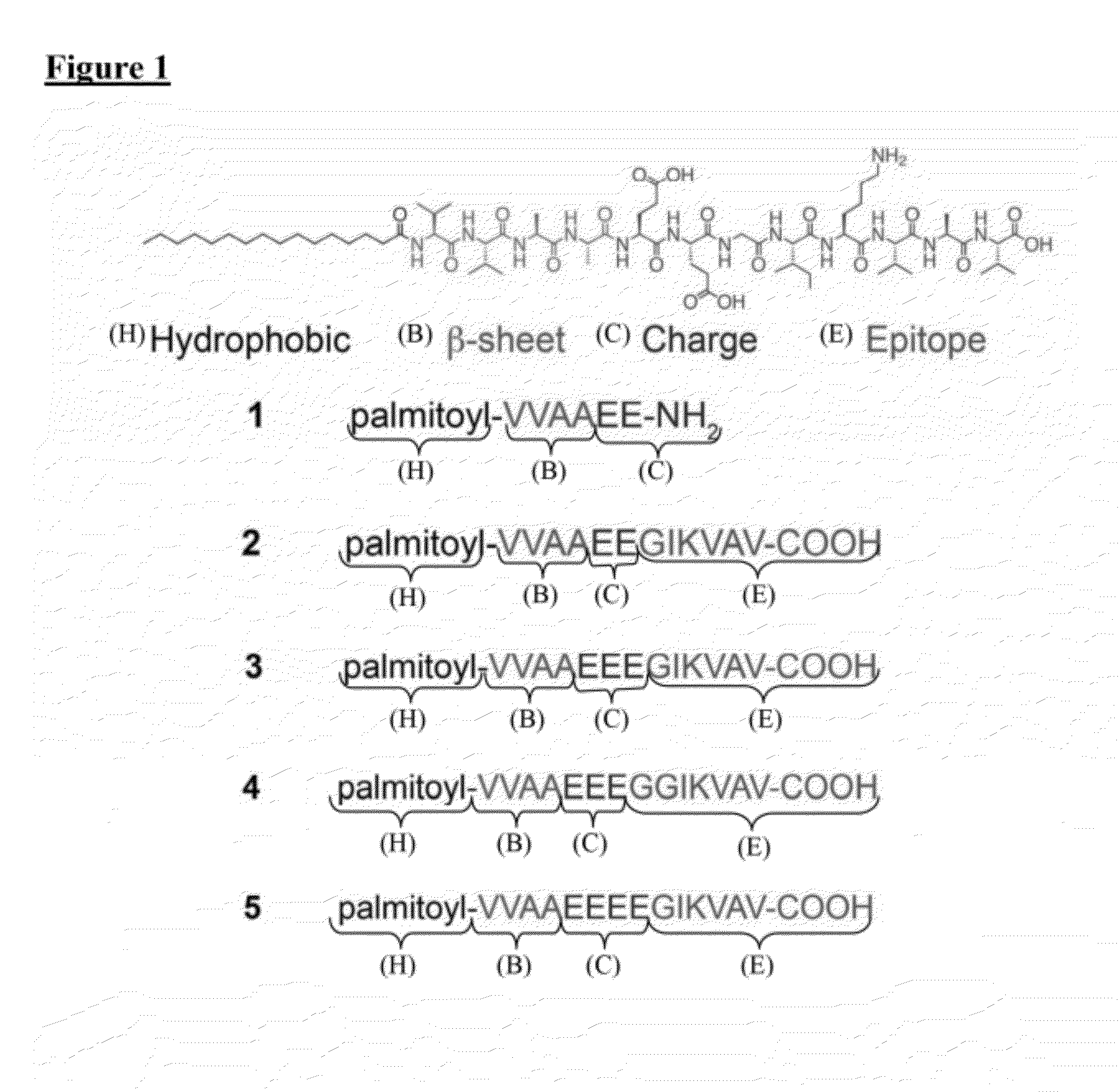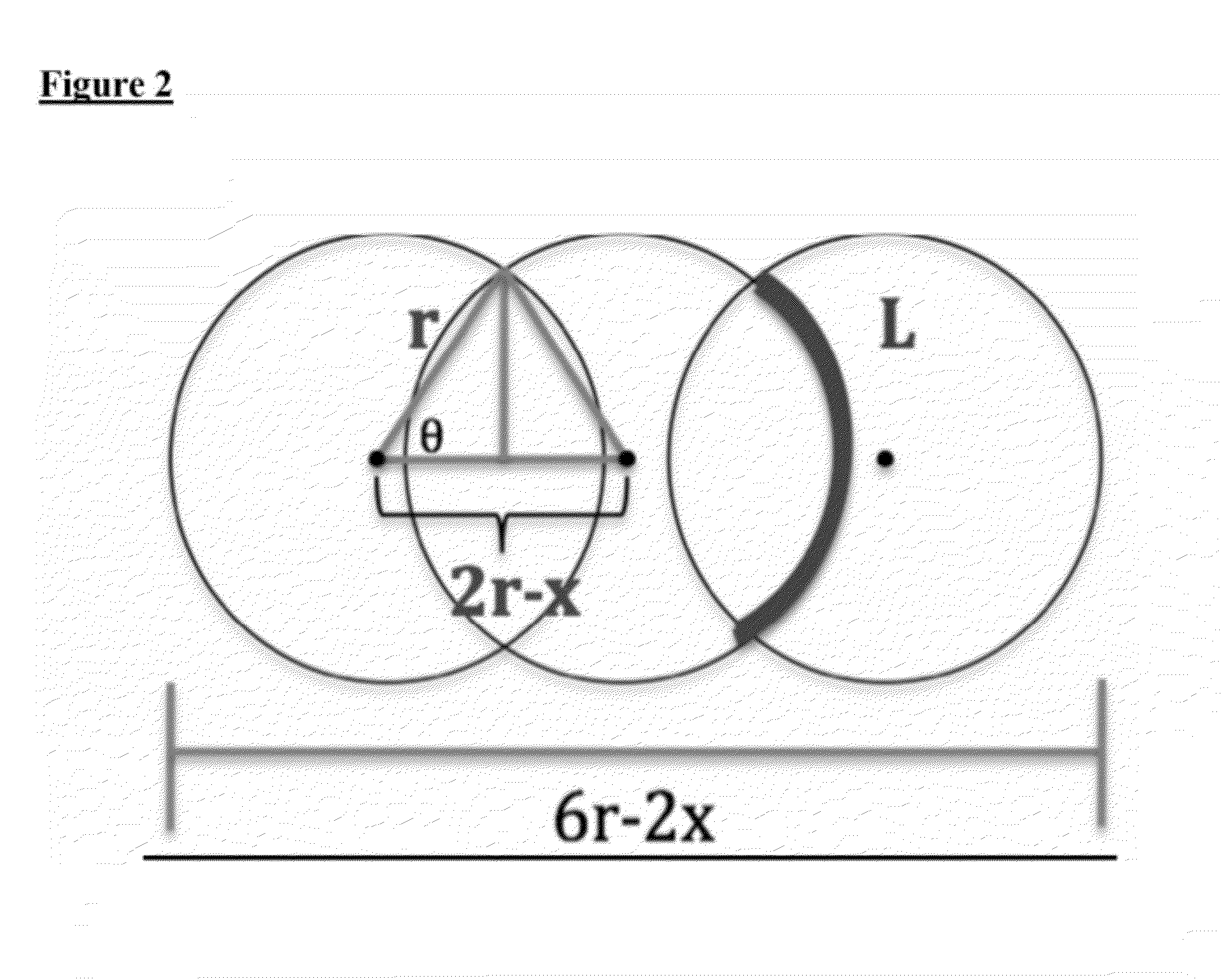Peptide amphiphiles and methods to electrostatically control bioactivity of the ikvav peptide epitope
- Summary
- Abstract
- Description
- Claims
- Application Information
AI Technical Summary
Benefits of technology
Problems solved by technology
Method used
Image
Examples
example 1
Peptide Amphiphile Synthesis and Purification
[0076]The PA compounds are referred herein as compounds 1 through 5, as shown in FIG. 1. PAs were synthesized using resins and Fmoc-protected amino acids purchased from Novabiochem Corporation. All other solvents were ACS reagent grade and purchased from Mallinckrodt and reagents were purchased from Aldrich and used as received. Manual solid-phase peptide synthesis was performed on a 0.5 mmole scale using 50 mL peptide synthesis vessels (Chemglass) and a wrist-action shaker. For 1, a Rink Amide resin was used. For 2-5, the initial valine acid was purchased preloaded as a Fmoc-Val Wang resin. For each coupling the Fmoc protecting group was removed by shaking the resin in 30% piperidine in N,N-dimethylformamide (DMF) for ten minutes, rinsed and repeated a second time. The resin was washed with dichloromethane (DCM) and DMF, and allowed to swell in DCM for 15 minutes before coupling. Amino acids were activated by adding 4 molar equivalents o...
example 2
Chemical Analysis of Peptide Amphiphiles
[0078]Peptide content analysis was performed on lyophilized samples following hydrolysis in 6N HCl at 110 C, to verify the stoichiometry and determine the residual salt concentration for compounds 1-5. The relative residue stoichiometry was within + / −5% of the expected values for all amino acids. The mg of total peptide amphiphile per mg of solid was determined and used to normalize concentration of the compounds in subsequent analysis. Identity and purity of the compounds was confirmed by analytical HPLC and ESI-MS.
example 3
Circular Dichroism (CD)
[0079]CD was done using a model J-715 Jasco Circular Dichroism Spectrometer. 1 wt % PA solutions were prepared in either a 150 mM NaCl, 3 mM KCl solution or a 150 mM NaCl, 3 mM KCl, and 5 mM CaCl2 solution, both at a pH of 7.2-7.4, as determined via pH paper. The solutions were then heated to 80° C. in a water bath for 1 hr, and then slowly cooled to room temperature over the course of 8 hr. The samples were measured through 0.01 mm quartz plates. Each trace represents the average of three scans. The mean residue ellipticity was corrected for purity of the lyophilized powder from peptide content analysis.
PUM
| Property | Measurement | Unit |
|---|---|---|
| Amphiphilic | aaaaa | aaaaa |
| Composition | aaaaa | aaaaa |
| Solubility (mass) | aaaaa | aaaaa |
Abstract
Description
Claims
Application Information
 Login to View More
Login to View More - R&D
- Intellectual Property
- Life Sciences
- Materials
- Tech Scout
- Unparalleled Data Quality
- Higher Quality Content
- 60% Fewer Hallucinations
Browse by: Latest US Patents, China's latest patents, Technical Efficacy Thesaurus, Application Domain, Technology Topic, Popular Technical Reports.
© 2025 PatSnap. All rights reserved.Legal|Privacy policy|Modern Slavery Act Transparency Statement|Sitemap|About US| Contact US: help@patsnap.com



